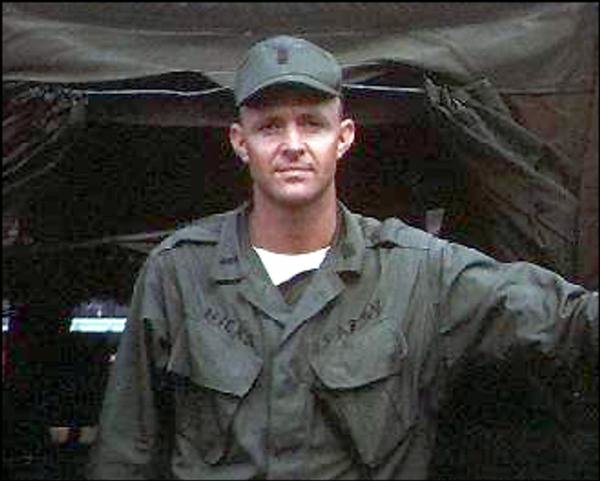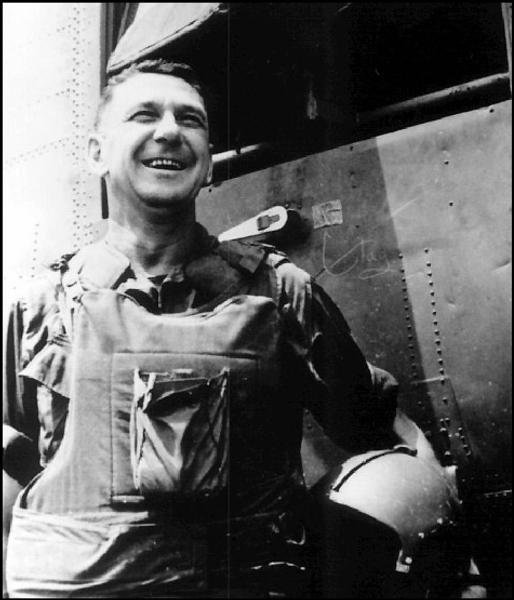The Sky Warriors of “Guns-A-Go-Go”: A Tribute to the Fallen Crew of AH-47 66-13152
Eyewitnesses reported seeing an object fall from the aircraft’s side just moments before it pitched violently upward, its front rotor rising to meet the rear.
May 4, 2025

The Sky Warriors of “Guns-A-Go-Go”: A Tribute to the Fallen Crew of AH-47 66-13152
In the brutal, unforgiving skies of Vietnam, a rare breed of gunship roared into battle—massive, heavily armed, and utterly unlike anything the enemy had ever seen. This was the AH-47 “Guns-A-Go-Go,” a flying fortress built from the bones of a Chinook and armed to the teeth. It was one of the most formidable airborne weapons platforms of the Vietnam War—and also one of the most experimental.
Only four of these aircraft were ever made. Born from the Army’s desire to test the limits of rotary-wing firepower, the ACH-47A project (Attack Cargo Helicopter) transformed the CH-47 Chinook into a gunship bristling with weapons: five .50 caliber machine guns, two 20mm cannons, 2.75" rocket pods, and a 40mm nose-mounted grenade launcher. The concept was radical. The results were unforgettable.
These airborne behemoths operated under the nickname “Guns-A-Go-Go,” assigned to the elite unit known as the 53rd Aviation Detachment (Test). They provided close air support for infantry operations, flying into hot landing zones, laying down overwhelming firepower, and protecting troop insertions from enemy ambushes.
But this daring experiment came at a cost.
The Final Flight of Aircraft #66-13152
 On May 5, 1966, one of the “Go-Go” birds—aircraft tail number 66-13152—was flying in support of the 1st Cavalry Division near LZ Uplift in Binh Dinh Province. During a firing pass, disaster struck.
On May 5, 1966, one of the “Go-Go” birds—aircraft tail number 66-13152—was flying in support of the 1st Cavalry Division near LZ Uplift in Binh Dinh Province. During a firing pass, disaster struck.
Eyewitnesses reported seeing an object fall from the aircraft’s side just moments before it pitched violently upward, its front rotor rising to meet the rear. In a horrifying moment, the massive gunship entered an uncontrollable spin, sheared apart midair, and tumbled 3,000 feet to the ground—where it exploded on impact. The inferno burned for hours.

The cause was sudden. Subtle. And catastrophic.
As the AH-47 “Guns-A-Go-Go” began its firing run, all appeared routine—a thunderous display of coordinated firepower raining down on enemy positions. But hidden within the roar of its cannons was a fatal flaw.
A single mechanical component—the ball lock retaining pin on the left-side 20mm cannon—had failed.
Mid-flight, it slipped loose. The pin was designed to secure the cannon in a fixed forward position. Without it, the immense recoil forces of the weapon had nowhere to go but upward.
The cannon lurched skyward, still firing.
And in that split-second of mechanical betrayal, the unthinkable happened:
The 20mm cannon discharged directly into the aircraft’s own rotor system.
The forward rotor—one of the massive twin blades keeping the 22,000-pound gunship aloft—was instantly shredded. Debris spiraled through the air as the rotors collided in a cascade of metal and torque. The entire aircraft, now robbed of stability, pitched violently and entered a fatal spin.
What had moments earlier been one of the most heavily armed aircraft in Vietnam was now a doomed juggernaut, spiraling uncontrollably toward the earth.
There was no time to radio a mayday. No way to recover.
The AH-47 tumbled nearly 3,000 feet before crashing into the sand with devastating force. The wreckage ignited immediately—its belly packed with rockets, ammunition, and high explosives—creating a fireball so intense that it burned for hours. It was a scene so volatile that rescuers could not safely approach the crash site for nearly three hours.
The very weapon designed to give this aircraft its supremacy had, in the blink of an eye, become its executioner.
This incident stands as a grim reminder of how fragile even the most formidable machines of war can be—when one small piece fails.
 The Fallen Heroes
The Fallen Heroes
Crew:
-
2LT Paul J. Hicks – Pilot (KIA)
-
CW2 Edward J. Weidenbach – Co-pilot (KIA)
-
SSGT Ariston R. Talan Jr. – Gunner (KIA)
-
SP4 Gary W. Rodrigues – Crew chief (KIA)
-
SGT Joaquin Arzuaga – Door gunner (KIA)
Passengers:
-
PFC Pike P. Mayo (KIA)
-
SP4 Melvin O’Neal Jr. (KIA)
-
PFC William E. White Jr. (KIA)

These eight men were not just soldiers. They were innovators, risk-takers, and warriors flying into battle in one of the most audacious helicopter programs of the war. They gave their lives in the line of duty, testing the limits of what airborne firepower could achieve—and paid the ultimate price.
“But for the Grace of God, There Go I”
A nearby pilot who witnessed the incident later recalled:
*“Early in the run, I saw the front rotor blade begin to collapse upward and intermingle with the rear. The AH-47 dropped like a stone and hit in the sand. It exploded for a long time because of all the ordnance they were packing. It was two or three hours before anyone dared get close to the crash site. I walked back to my Huey that day carrying the full weight of the wings we wore. I knew then that—*but for the grace of God—there go I.”
 The Legacy of Guns-A-Go-Go
The Legacy of Guns-A-Go-Go
Of the four AH-47s built, two were lost in combat—one to enemy fire, and one, tragically, to mechanical failure. By 1968, the program was shut down, but its lessons lived on. The concept of a gunship helicopter, tested in fire and blood by these daring crews, would evolve into the AH-1 Cobra and later the AH-64 Apache.
But the "Guns-A-Go-Go" crews were the first to prove that a helicopter could carry the firepower of a tank and the courage of a soldier.
They were giants of the air. And they are not forgotten.
 The Fallen Heroes
The Fallen Heroes The Legacy of Guns-A-Go-Go
The Legacy of Guns-A-Go-Go